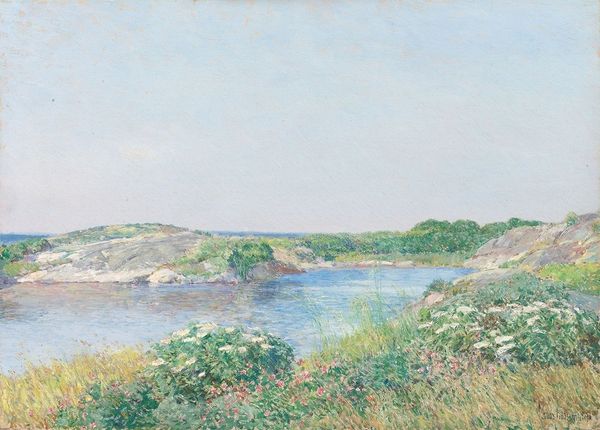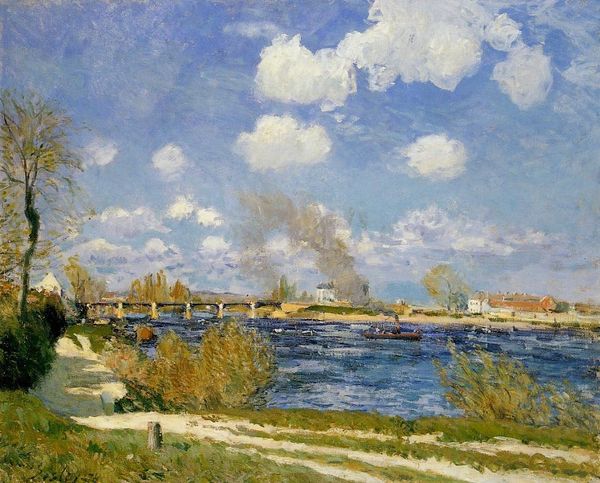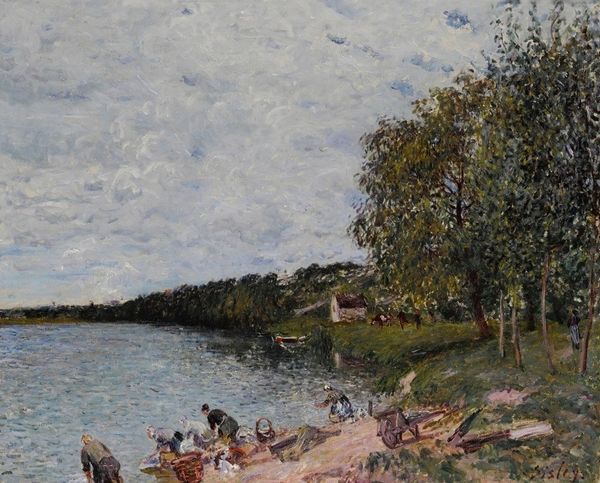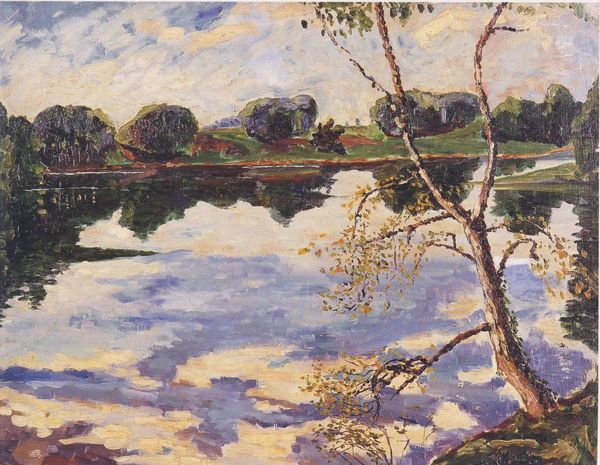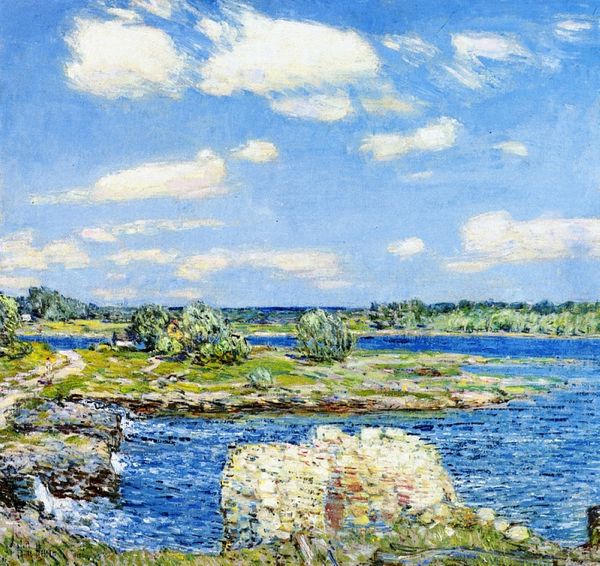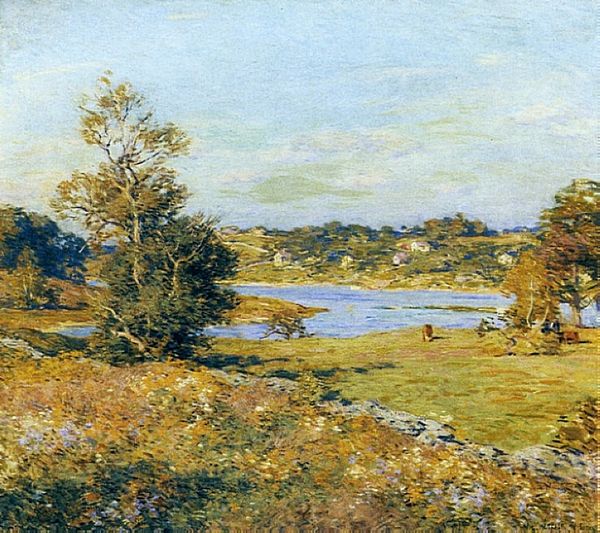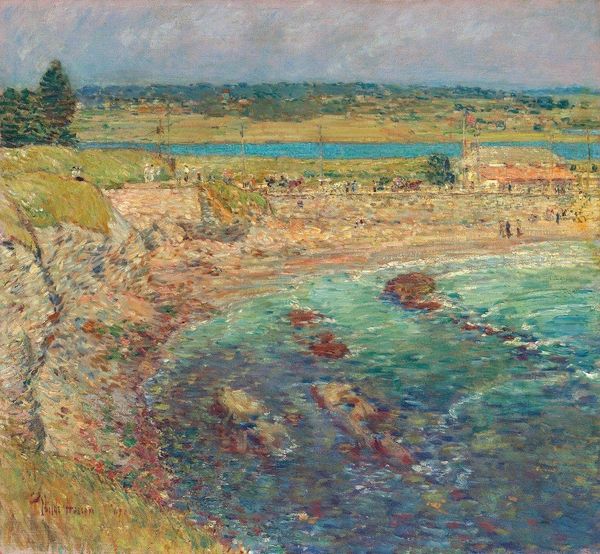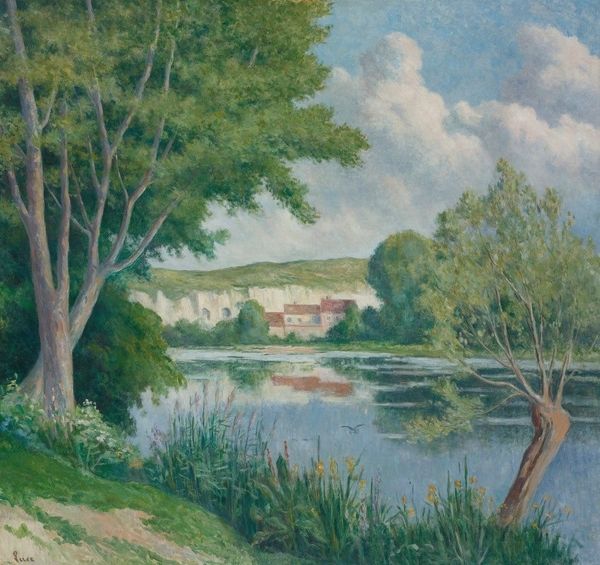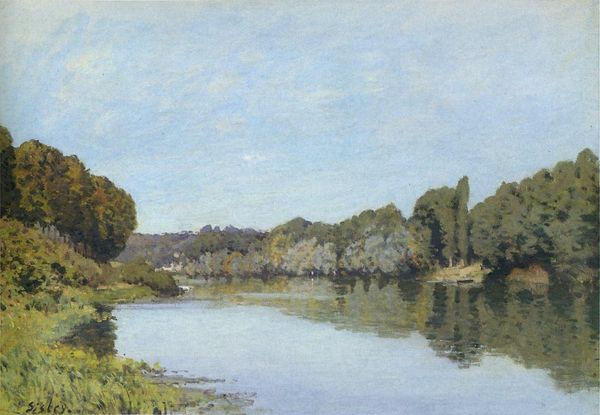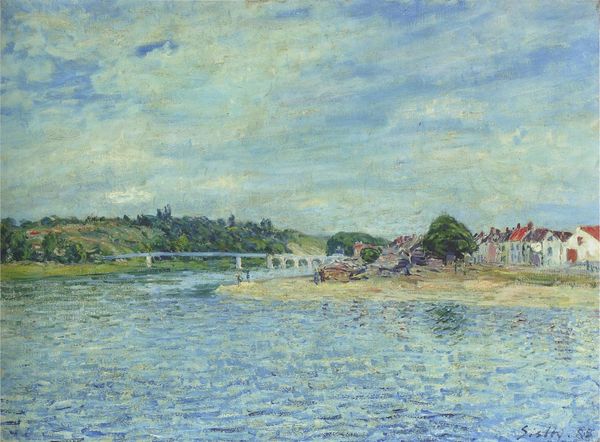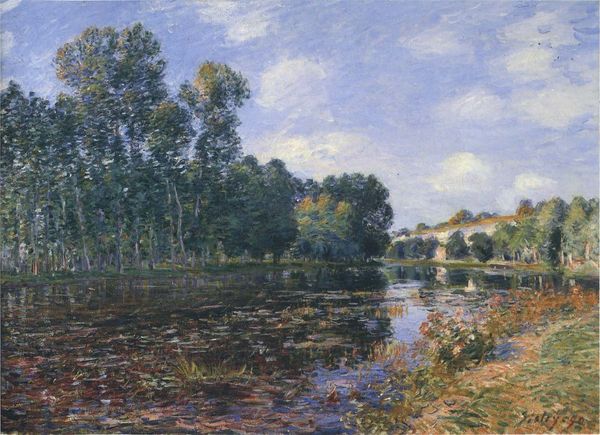
Copyright: Public Domain: Artvee
Editor: Here we have Alfred Sisley's "Un Noyer Dans La Prairie De Thomery" from 1880, an oil painting. I’m immediately struck by how the dappled light creates such a breezy, pleasant scene. What do you see in this piece? Curator: I see a focus on the material conditions of its creation. The "en plein air" technique, for instance. Think about the physical act of painting outside – the transport of materials, the fleeting light. It speaks volumes about the artist's direct engagement with labor and nature. Sisley is not just representing a landscape, but documenting his *process* within a specific timeframe. What's the socio-economic implication of leisure represented in paintings? Editor: Well, you can tell that the figures by the river aren’t working – they are leisurely enjoying the day, which may reveal the painting to be intended for those who have time to enjoy art, like wealthy patrons, right? Curator: Precisely! And it underscores the class dynamics at play. How were paintings like this consumed and circulated? By whom, and for what purpose? Consider the production and the materiality of Impressionism itself: commercially available pigments, easily portable canvases that facilitated its rapid execution... Editor: I hadn’t considered the commercial element. I suppose art supplies had to be more accessible than ever to enable so many impressionist painters. Curator: Exactly. By shifting the focus to materials and social practices we avoid merely aesthetic interpretations. What are some lingering thoughts you'll carry? Editor: I'll certainly look more closely at the choices of materials and how they influenced the final piece, and the cultural environment it took place in.
Comments
No comments
Be the first to comment and join the conversation on the ultimate creative platform.
